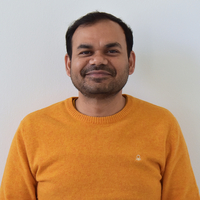Institute of Molecular Biology (IMB)
Roopesh Anand Joan Barau Petra Beli Claudia Keller Valsecchi René Ketting Anton Khmelinskii Julian König Nard Kubben Katja Luck Christof Niehrs Jan Padeken Stamatis Papathanasiou Katharina Papsdorf Sandra Schick Helle Ulrich Siyao Wang Sina WittmannMechanisms of DNA double-strand break repair

The DNA in our cells faces constant challenges from both intrinsic (cellular metabolites) and external (environmental) genotoxic agents. These challenges often result in various types of DNA lesions, including DNA double-strand breaks (DSBs). Incorrect repair of DSBs can lead to cancer development. Homologous recombination (HR) is one of the predominant DSB repair pathways and uses the sister chromatid as a template to restore the broken DNA duplex.
Our research primarily focuses on understanding DSB repair through homology-directed repair (HDR) pathways, including HR. We are specifically interested in elucidating the mechanisms of break-induced replication (BIR) and related repair pathways, which are highly mutagenic and utilise a conservative mode of replication for DSB repair. Additionally, we aim to define the biochemical and cellular functions of HELQ, a peculiar DNA helicase that can also anneal DNA strands, in maintaining genome stability through multiple HDR repair pathways. To address these questions, we employ biochemistry, single-molecule imaging techniques, and cell-based assays in our laboratory.
Positions held
- Since 2024: Group Leader, Institute of Molecular Biology (IMB), Mainz
- 2019 - 2024: Postdoctoral researcher, The Francis Crick Institute, London
- 2016 - 2019: Postdoctoral researcher, Institute for Research in Biomedicine (IRB), Bellinzona
Education
- 2016: PhD in Cancer Biology, University of Zurich
- 2011: MSc in Transfusion and Transplantation Sciences, University of Bristol
- 2009: BSc in Medical Laboratory Technology, Punjab Technical University
Selected publications by Roopesh Anand
Fleury H, MacEachern MK, Stiefel CM, Anand R, Sempeck C, Nebenfuehr B, Maurer-Alcalá K, Ball K, Proctor B, Belan O, Taylor E, Ortega R, Dodd B, Weatherly L, Dansoko D, Leung JW, Boulton SJ and Arnoult N (2023) The APE2 nuclease is essential for DNA double-strand break repair by microhomology-mediated end joining. Mol Cell, 83:1429–1445.e8. Link
Anand R*, Buechelmaier E*, Belan O, Newton M, Vancevska A, Kaczmarczyk A, Takaki T, Rueda DS, Powell SN and Boulton SJ (2022) HELQ is a dual-function DSB repair enzyme modulated by RPA and RAD51. Nature, 601:268–273 Link
Belan O, Barroso C, Kaczmarczyk A, Anand R, Federico S, O’Reilly N, Newton MD, Maeots E, Enchev RI, Martinez-Perez E, Rueda DS and Boulton SJ (2021) Single-molecule analysis reveals cooperative stimulation of Rad51 filament nucleation and growth by mediator proteins. Mol Cell, 81:1058–1073.e7 Link
Anand R, Jasrotia A, Bundschuh D, Howard SM, Ranjha L, Stucki M and Cejka P (2019) NBS1 promotes the endonuclease activity of the MRE11-RAD50 complex by sensing CtIP phosphorylation. EMBO J, 38:e101005 Link
Anand R, Ranjha L, Cannavo E and Cejka P (2016) Phosphorylated CtIP functions as a co-factor of the MRE11-RAD50-NBS1 endonuclease in DNA end resection. Mol Cell, 64:940–950 Link